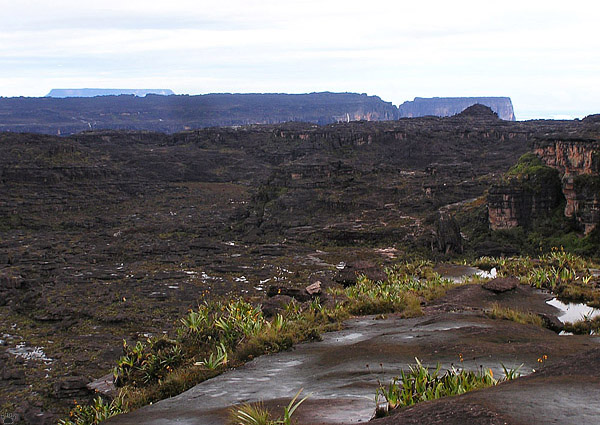
The summit plateau of Roraima. |
Climbing Mount Roraima - Part 4
The summit plateau of Roraima is a vast expanse of eroded sandstone. It looks black at a distance, because almost all exposed surfaces are covered with black layer of "desert-tanned" material containing rock-penetrating microscopic algae.
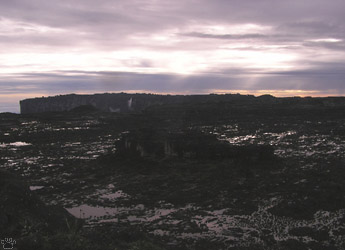 |
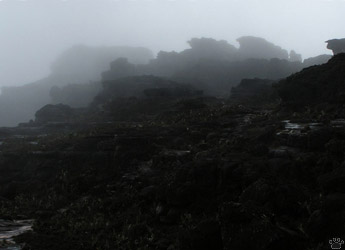 |
| Typical views of the summit plateau. |
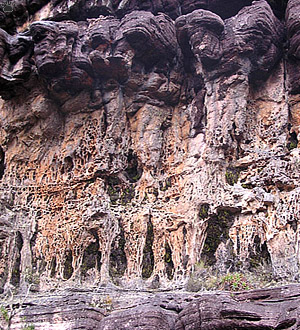
Exposed sandstone, Roraima. |
Only where the sandstone is protected from sun, rain and fog by rocky overhangs, or constantly polished by running water, can its true color be seen. It is usually pink, but sometimes golden-yellow or whitish. |
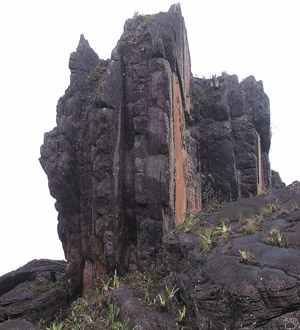
This upturned block of sandstone is almost 60 m/200 feet high. |
 |
 |
| Rocks on the summit plateau, Roraima. |
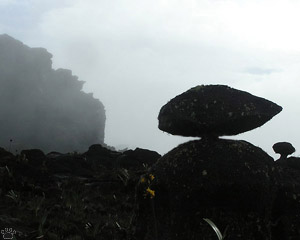
Rock, Roraima. |
The plateau seems flat from below, but once there, you find deep canyons, bottomless crevasses, steep hills and lots of weird rock formations. |
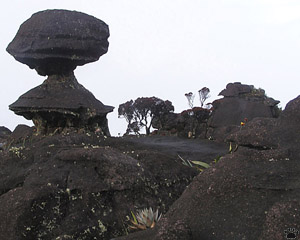
Rock, Roraima. |
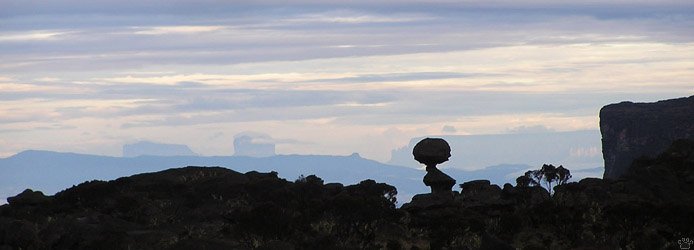
Roraima skyline. |
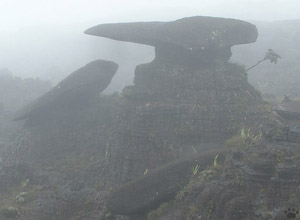
Rock, Roraima. |
The sandstone consists of horizontal layers, some eroding faster than others. That's why mushroom- shaped rocks are so common. |
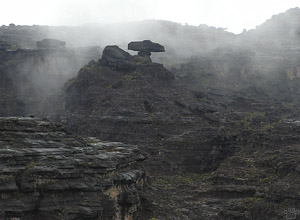
Rock, Roraima. |
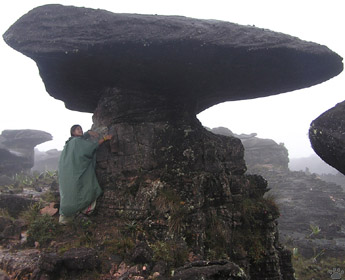 |
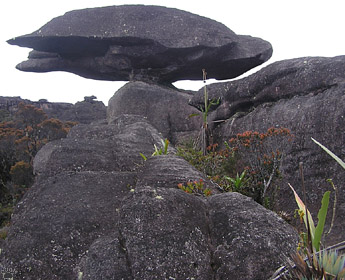 |
| Rocks on the summit plateau, Roraima. |
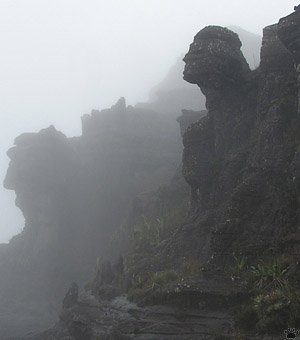
Rocks, Roraima. |
Even with lots of unusually- shaped rocks around, it's still very difficult to navigate on the plateau in bad weather, especially in the areas known as "labyrinths", that cover much of its northwestern part. |
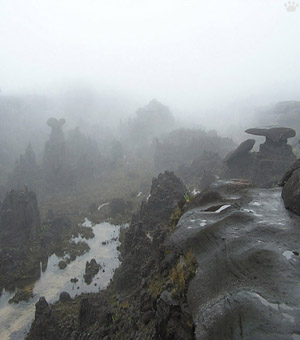
Part of "labyrinth" area, Roraima. |
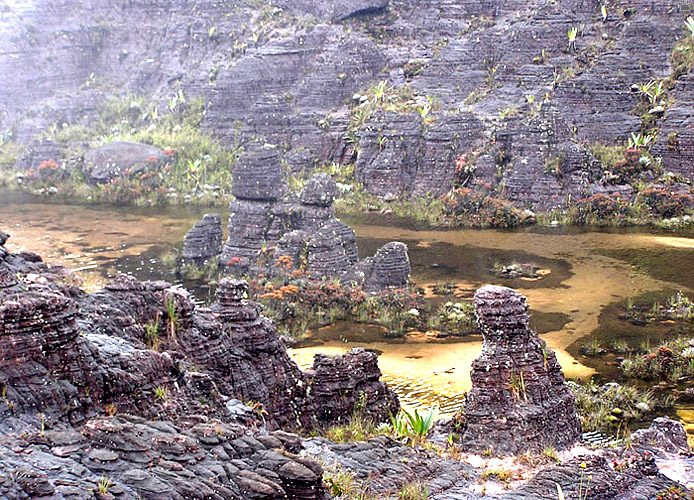
Part of "labyrinth" area, Roraima. |
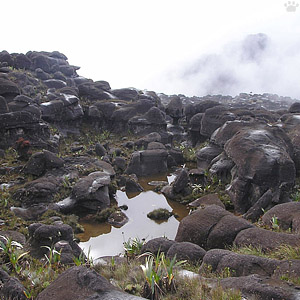
Cetraria lichen growing at the base of a fern, Roraima. |
About 20% of the plateau is covered with water - countless bogs, ponds, streams, and lakes. You have to wade in cold water for much of the time. The water is perfectly drinkable. |
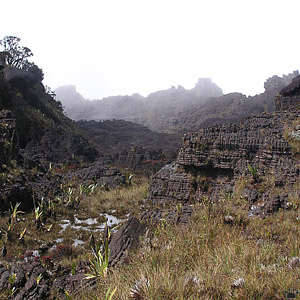
Cetraria lichen, Roraima. |
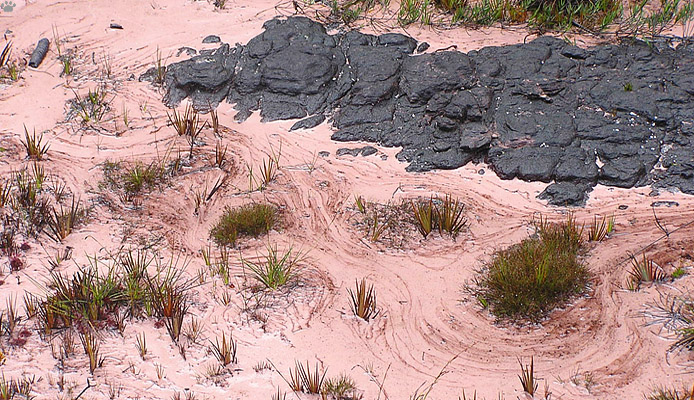
Shallow stream through a marsh, Roraima. |

Peat swamp, Roraima. |
Peat swamps are the most interesting. They are the most colorful places on the plateau, covered with lush carpets of mosses, club mosses, bromeliads and carnivorous plants. They are usually very shallow and easy to walk across. |
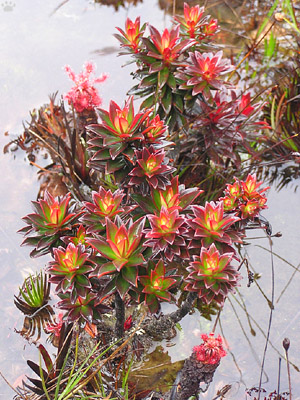
Bonnetia and sundews Drosera roraimae, Roraima. |

Orectanthe sceptrum (Xyridaceae), orchids Epidendrum ulei, sundews and club mosses in a marsh, Roraima. |
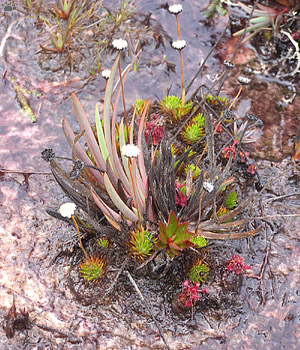
Rondonanthus roraimae growing on sandstone, Roraima. |
Thanks to the daily doses of fog and rain, swamp plants can grow on bare sandstone with virtually no soil. These exquisite "rock gardens" are particularly extensive in the interior of the plateau. |
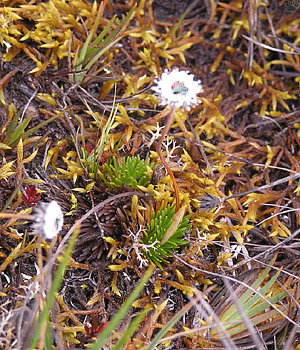
Rondonanthus roraimae growing on peat, Roraima. |
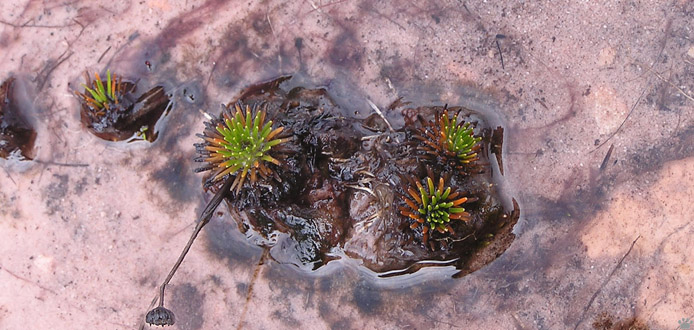
Tiny island of Rondonanthus roraimae on bare sandstone, Roraima. |
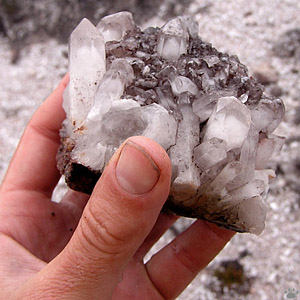
Quartz crystals, Roraima. |
Many riverbeds on the plateau are lined with millions of quartz crystals. They are usually white or pink, but can be also smoky- grey, red, or black. Fields of crystals go on for miles. |
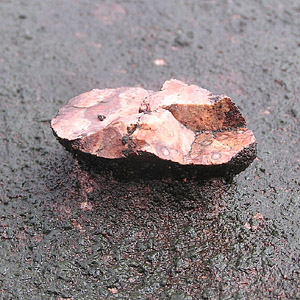
Sandstone nodule attached to a rock, Roraima. |
 |
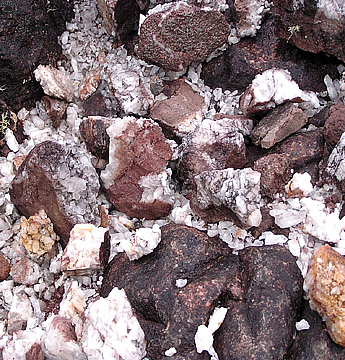 |
| Fields of quartz crystals in a dry riverbed, Roraima. |
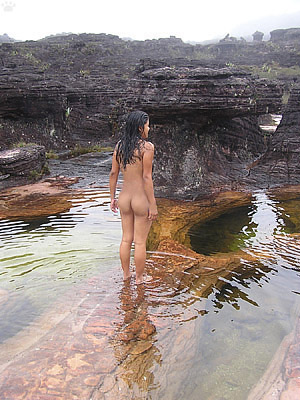
Bathing in a "jacuzzi", Roraima. |
Some rivers run through long chains of "jacuzzis" - bathtub-like pools with bottoms lined with quartz Native tour guides use them for bathing, but most tourists find the water too cold to get in. The pools probably have some of the purest water on the planet. |
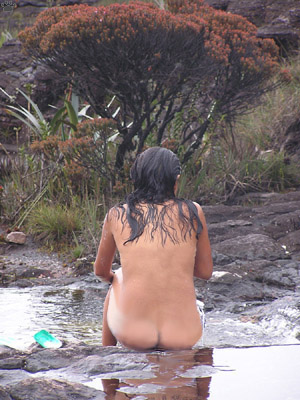
Bathing in a "Jacuzzi", Roraima. |
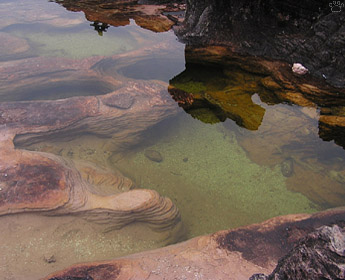 |
 |
| "Jacuzzis", Roraima. |
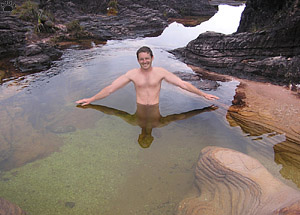
Bathing in a "Jacuzzi", Roraima. |
The largest lake on the plateau is Lago Gladys, about 100 m/300 feet across. It seems to be slowly taken over by floating vegetation. |
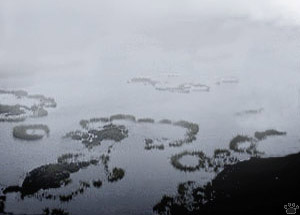
Fog over Lago Gladys, Roraima. |
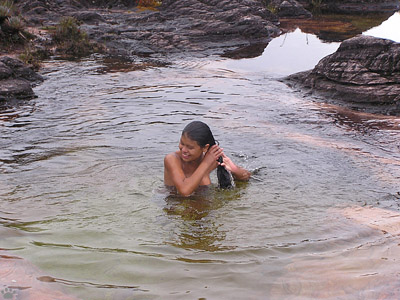
Bathing in a "Jacuzzi", Roraima. |
Part 5. Flora
Back to Part 3
Home
|




































